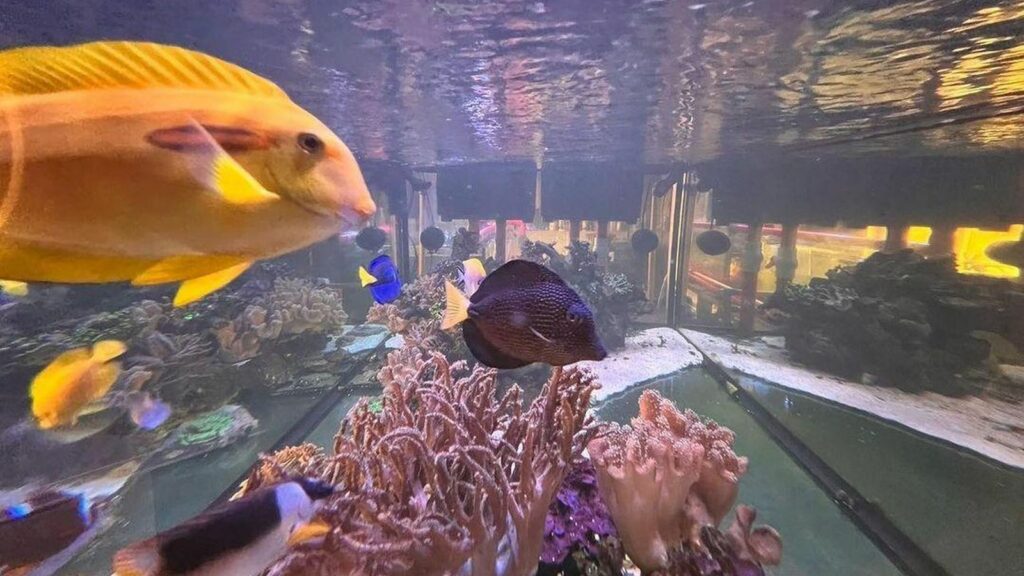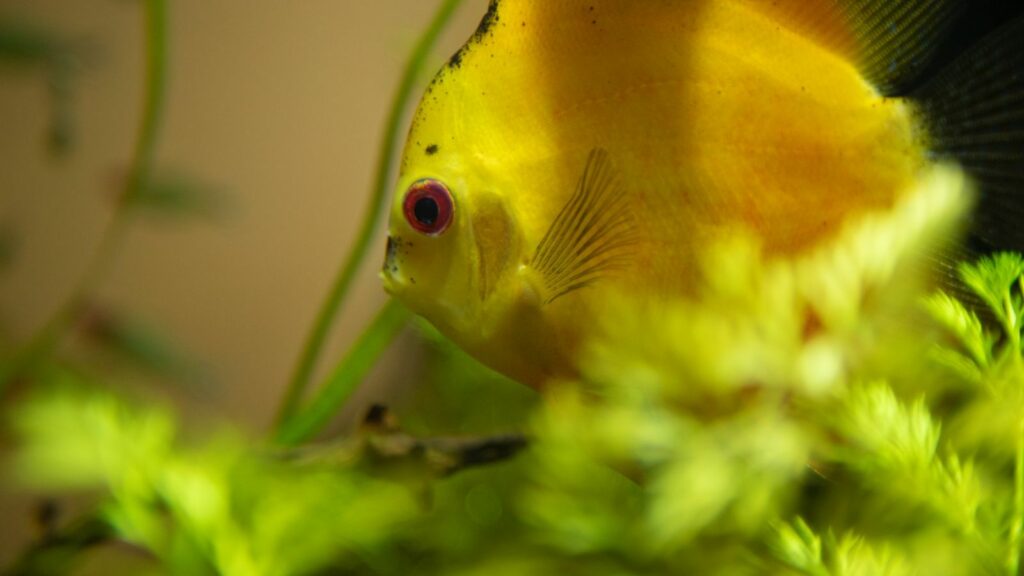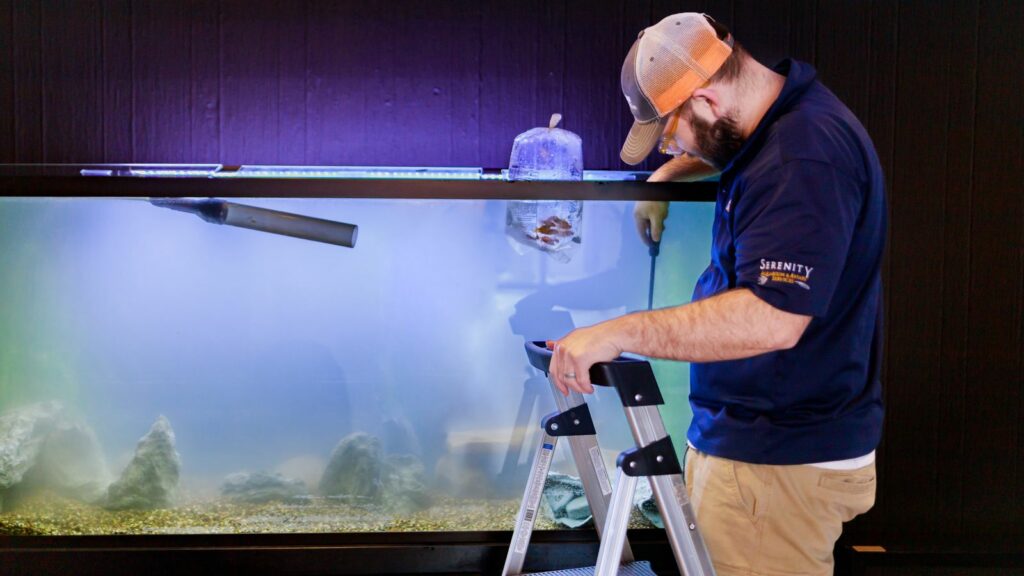Estimated Read Time: 6 minutes
The saltwater vs freshwater aquarium debate rages on.
The first decision you’ll make when getting a fish tank is whether to fill it with freshwater or saltwater.
From there, you can begin the journey of selecting the size of the tank, filtration system, types of fish, plants, and any other decor that you want.
If you’re on the fence about the type of aquarium you want, we’re here to help.
Here’s what you’ll find in our comprehensive guide!
Saltwater vs Freshwater
With some research and hard work, any aquarium owner can create a healthy freshwater or saltwater ecosystem.
As such, both tanks can emulate the natural habitats of certain fish and plants.
But which is more difficult to maintain? Which costs more? What about saltwater vs freshwater aquarium fish? What’s the difference in equipment between them?
Let’s dive right in!
Water Composition
Although it’s called “freshwater”, these habitats still contain small traces of salt.
In most cases, freshwater environments have a salt-to-water ratio between 0.5% and 1.0%.

For marine environments (pictured above), the appropriate level of salt is around 3.0%-3.5%.
How do you measure the amount of salt in a fish tank?
You can use a hydrometer.
These are very affordable and can be found at most pet stores, like this hydrometer from Petco.
Adding Water to the Fish Tank
Adding Freshwater
Freshwater fish typically live in rivers, lakes, and ponds.
So, preparing the water for a freshwater tank is generally simple.
Fill the tank with tap water and add the appropriate amount of de-chlorinator to remove fish-harming chlorine.
Adding Saltwater
For a saltwater fish tank, adding water comes with a few extra steps.
You may use tap water to fill the tank, but adding a de-chlorinator won’t be enough for your marine ecosystem.
Many experts say to mix tap water with sea salt and purify the mixture using a reverse osmosis deionization system (RODI).
This system removes contaminants found in city tap water and is more effective than chemical additives.
After that process, water can be added to the tank.
Then, you’ll need to test the water to ensure you have the correct amount of salt.
Also, coral and anemones, for example, may need additives like iodine and calcium to remain healthy.
Testing the Water
You’ve added water to your tank, but your job isn’t over yet.
For saltwater and freshwater aquariums, you will need to regularly check a few levels in the water:
- pH Level
- Ammonia
- Temperature
- Water Hardness
These need to be stable and consistent for a healthy ecosystem.
The levels will fluctuate throughout the life of your fish tank, so it’s important to be proactive and measure them a few times a week.
Size of the Fish Tank

When it comes to fish tanks, the bigger, the better.
A large aquatic habitat is a much more impressive decoration than a small fish bowl.
But most importantly, it’s a much better living situation for your fish, as they have more room to roam.
How does the size of a fish tank relate to the type of water in it?
You can have a healthy 10-gallon freshwater tank, but this is too small for saltwater.
The main issue is that saltwater environments are more delicate than freshwater ones.
The best way to make a saltwater aquarium more stable is by simply having more water in the tank. This is true for freshwater tanks as well, but it is more important for saltwater.
Whether you have a freshwater or saltwater aquarium, you should get the biggest fish tank you can fit and afford.
And if you want a saltwater tank, but space is limited, a 20-gallon tank is the smallest recommended size.
Saltwater Fish vs Freshwater Fish

Freshwater Aquarium Fish
A primary benefit of freshwater fish is that they’re generally hardier and more forgiving than saltwater species.
As we mentioned, freshwater fish are found in rivers, streams, ponds, and lakes and have adapted to these different environments.
For example, betta fish, tetras, catfish, danios, and guppies are all excellent starter fish that can withstand some imperfections in their environment.
Saltwater Aquarium Fish
Saltwater fish are typically more vibrant and colorful than freshwater fish.
Their diverse colors, along with brightly colored corals, make for an awe-inspiring view.
But as we alluded to, saltwater fish are much less forgiving to problems within the environment.
You’ll also find that saltwater fish are generally more expensive than freshwater fish.
However, there are some hardy saltwater fish, too.
Clownfish, damselfish, cardinal fish, and bicolor blennies are just a few of the best starter fish for saltwater aquariums.
Additional Aquarium Equipment
There are many similarities in the equipment for freshwater and saltwater tanks, but there are some differences.
First, let’s see the list of the equipment needed for both freshwater and saltwater setups:
- Fish tank
- Fish tank stand
- Substrate
- Decor
- Water heater
- Chillers
- Thermometer
- Powerhead
- Filtration system
- Water Test Kits
- Lights
- Air Pumps
- Overflows & Returns
- Back-up power source
And second, here’s the additional equipment you need for a saltwater tank:
- Protein Skimmer
- Sea Salt
- Hydrometer
Protein Skimmer for Saltwater
The main purpose of a protein skimmer is to remove organic waste from the water.
By shooting thousands of microbubbles into the water, harmful proteins latch onto these bubbles at the surface.
The dirty water gets pushed through the neck of the skimmer and collects in a cup, ready for removal.
Sea Salt and a Hydrometer for Saltwater
You need sea salt to create the proper environment for your fish and marine plants.
A hydrometer is also crucial, as it helps you measure the amount of sea salt, which should make up around 3% of the water.
Cost of Saltwater vs Freshwater Aquarium
The cost of freshwater and saltwater aquariums can vary greatly depending on the size of the tank, equipment, amount of fish, types of fish, decor, and cleaning products.
However, saltwater aquariums generally cost more than freshwater aquariums.
Saltwater requires additional equipment and cleaning products, saltwater fish are usually more expensive, and marine plants are pricier than those for freshwater.
If you’re shopping with a budget in mind, freshwater aquariums are considered the more affordable option.
Ongoing Maintenance for Saltwater and Freshwater Aquariums

The condition of your aquarium will mostly depend on your ability to clean it.
You’ll have several tasks to keep your freshwater or saltwater tank running smoothly:
- Clean algae off the glass
- Scrub algae off the decor
- Vacuum old food and other decaying materials off the substrate
- Clean and maintain the filtration system
- Conduct water changes
- Check the health of your fish
So are saltwater aquariums hard to maintain?
Well, the maintenance of a saltwater aquarium vs a freshwater aquarium is pretty similar.
But, in a general sense, there is a higher chance of problems occurring in saltwater fish tanks.
Freshwater Aquariums in Business Facilities

Are you looking at a freshwater aquarium for your business? Serenity can help!
We service commercial aquariums so your staff will never worry about cleaning or ongoing maintenance.
But keep in mind, Serenity only services freshwater aquariums.
We will also provide cleaning and maintenance for existing aquariums, but they must be freshwater tanks.
If you have any questions about our custom-built aquariums or our service availability, don’t hesitate to contact us!
Wrapping Up
Now that we’ve discussed the saltwater vs freshwater aquarium debate, which is better?
The answer will depend on your preference and experience level.
Marine aquariums are usually more vibrant and diversely colored than freshwater.
Still, they’re generally more expensive and trickier to maintain.
Freshwater fish tanks, on the other hand, are an easier and generally less expensive option for fish hobbyists. The stability of the water and the hardiness of those fish make it a more forgiving endeavor.
But, with research and hard work, you can create a flourishing aquatic environment, regardless of the water composition!